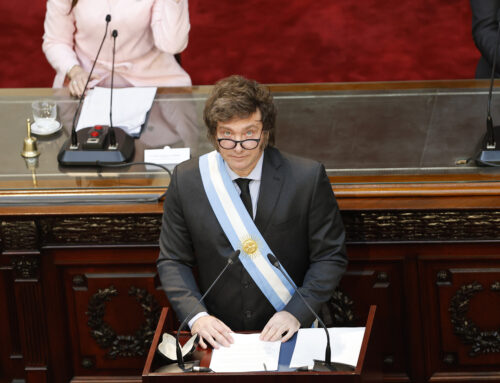In a strategic move to stabilize the national currency, the Argentine government has initiated the “Dollar Storm” plan, aiming to bring the exchange rate down to $1,000 pesos per U.S. dollar. This initiative is part of a broader effort to accumulate reserves and control inflation, aligning with the targets set in the recent agreement with the International Monetary Fund (IMF).
President Javier Milei has conveyed two critical messages: urging the agricultural sector to expedite grain exports before a planned increase in export taxes by the end of June, and informing investors that the Central Bank will only intervene in the foreign exchange market when the dollar reaches the lower bound of the established band at $1,000 pesos. These announcements have already led to a significant decrease in exchange rates across various markets.
The plan’s first phase has been successfully implemented, with an influx of $13.5 billion in fresh funds—$12 billion from the IMF and $1.5 billion from the World Bank. These funds serve as a robust buffer, deterring speculative attacks on the peso and reinforcing the government’s commitment to economic stability.

The next phase involves the anticipated inflow of export revenues from the agricultural sector. Despite concerns over declining soybean prices and a current exchange rate of $1,130 pesos, the government expects substantial foreign currency earnings between late April and May, which should further strengthen the peso in the short term.
Additionally, the government has opened the foreign exchange market to international investors, allowing them to participate with a minimum commitment of six months. This move has garnered positive responses from financial institutions, with JP Morgan recommending investments in peso-denominated bonds, citing increased interest rates and a downward trend in the dollar.
Stay Informed on Argentina’s Economic Developments
For comprehensive coverage of Argentina’s economic strategies and their implications, subscribe to our newsletter for timely updates and expert analyses.







Leave A Comment